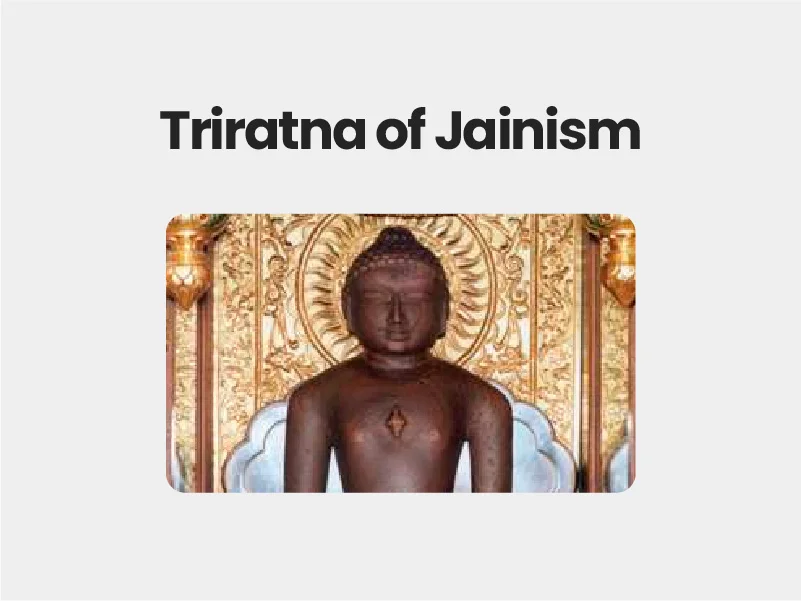
Triratna of Jainism
Triratna of Jainism – Triratna, (Sanskrit: “Three Jewels”) Pali Ti-ratana, also called Threefold Refuge, in Buddhism the Triratna comprises the Buddha, the dharma (doctrine, or teaching), and the sangha (the monastic order, or community). One becomes a Buddhist by saying the words “I go to the Buddha for refuge, I go to the Doctrine for refuge, I go to the Order for refuge.” In Jainism the three jewels (also referred to as ratnatraya) are understood as samyagdarshana (“right faith”), samyagjnana (“right knowledge”), and samyakcharitra (“right conduct”). One of the three cannot exist exclusive of the others, and all are required for spiritual liberation. The Triratna is symbolized frequently in art as a trident.
The Three Jewels of Jainism
- The aim of Jain life is to achieve liberation of the soul.
- This is done by following the Jain ethical code, or to put it simply, living rightly by following the three jewels of Jain ethics.
- There are three parts to this: right faith, right knowledge and right conduct. The first two are very closely connected.
Right faith – Samyak darshana
- This doesn’t mean believing what you’re told, but means seeing (hearing, feeling, etc.) things properly, and avoiding preconceptions and superstitions that get in the way of seeing clearly.
- Some books call samyak darshana “right perception”. You can’t achieve this unless you are determined to find the truth, and distinguish it from untruth.
Right knowledge – Samyak jnana
- This means having an accurate and sufficient knowledge of the real universe – this requires a true knowledge of the five (or six) substances and nine truths of the universe – and having that knowledge with the right mental attitude.
- “if our character is flawed and our conscience is not clear, knowledge alone will not help us achieve composure and happiness”.
- Today this means having a proper knowledge of the Jain scriptures.
- Some writers describe right knowledge as meaning having a pure soul; a soul that is free from attachment and desire… others say that a person who has right knowledge will naturally free themselves from attachment and desire, and so achieve peace of mind.
Right conduct – Samyak charitra
- This means living your life according to Jain ethical rules, to avoid doing harm to living things and freeing yourself from attachment and other impure attitudes and thoughts.
- Jains believe that a person who has right faith and right knowledge will be motivated and able to achieve right conduct.
- Many Jains believe that a person without right faith and right knowledge cannot achieve right conduct – so it’s no use following scripture and ritual for the wrong reasons (e.g. so that other people will think you are a good person). Not all Jains hold this view.
Enroll today with the best civils service academy and take your first step towards your Civils journey.
Feel free to reach out to us for any inquiries, collaborations, or support. We’re here to help.

